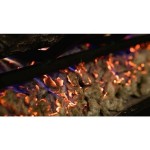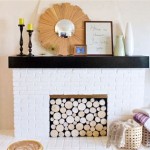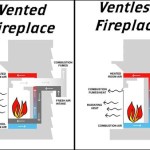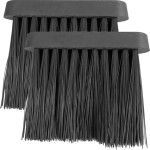Direct Vent Gas Fireplaces: A Comprehensive Review
Direct vent gas fireplaces have become increasingly popular as a supplemental heating source and aesthetic focal point in homes. They offer efficiency, convenience, and design flexibility compared to traditional wood-burning fireplaces. This article provides a detailed review of direct vent gas fireplaces, covering their functionality, advantages, disadvantages, installation, and key considerations for potential buyers.
A direct vent gas fireplace is a sealed combustion system, meaning it draws air for combustion from outside the home and vents exhaust gases directly outside through a coaxial or co-linear vent system. This sealed system is a significant safety feature, preventing the back drafting of harmful combustion byproducts, such as carbon monoxide, into the living space. The fireplace itself is typically enclosed in a firebox made of steel or cast iron, with ceramic glass providing a view of the flames. Realistic-looking ceramic logs are often used to mimic the appearance of a wood-burning fire. Control mechanisms range from simple on/off switches to sophisticated remote controls and programmable thermostats.
Understanding the Functionality and Components
The operation of a direct vent gas fireplace relies on a carefully engineered system. The fireplace is connected to a natural gas line or propane tank, which supplies the fuel for combustion. When the unit is activated, a burner ignites the gas, producing flames that heat the firebox and ceramic logs. The heat is then radiated into the room, providing supplemental warmth. The vent system plays a crucial role in safely expelling exhaust gases outside the home. The coaxial vent system consists of two concentric pipes: one pipe draws fresh air in from the outside, while the other vents exhaust gases out. The co-linear vent system uses two separate pipes, one for intake and one for exhaust. Both systems ensure that the combustion process is isolated from the indoor air, promoting safety and efficiency.
The efficiency of a direct vent gas fireplace is measured by its AFUE (Annual Fuel Utilization Efficiency) rating. This rating indicates the percentage of fuel that is converted into usable heat. Higher AFUE ratings signify greater efficiency and lower operating costs. Direct vent fireplaces typically have AFUE ratings ranging from 70% to 90%, making them more efficient than traditional wood-burning fireplaces, which often have AFUE ratings below 20%. The efficiency is attributed to the sealed combustion system, which minimizes heat loss through the chimney and prevents drafts from entering the home.
Control systems in direct vent gas fireplaces vary depending on the model and manufacturer. Basic models may have a simple on/off switch and a manual gas valve. More advanced models include remote controls, programmable thermostats, and electronic ignition systems. Remote controls allow users to adjust the flame height, temperature, and fan speed from a distance. Programmable thermostats enable users to set specific temperatures and schedules, optimizing energy efficiency and comfort. Electronic ignition systems eliminate the need for a pilot light, further reducing gas consumption and operating costs.
Advantages of Direct Vent Gas Fireplaces
The advantages of direct vent gas fireplaces are numerous and contribute to their widespread popularity. One of the primary benefits is convenience. Unlike wood-burning fireplaces that require manual loading of wood and cleaning of ashes, direct vent gas fireplaces offer instant heat with the flip of a switch or press of a button. This convenience makes them an attractive option for busy homeowners who want to enjoy the ambiance of a fire without the hassle of traditional wood-burning.
Safety is another significant advantage. The sealed combustion system eliminates the risk of carbon monoxide poisoning and reduces the potential for house fires caused by sparks or embers. The direct vent system also prevents drafts and minimizes the introduction of allergens and pollutants into the home. This makes direct vent gas fireplaces a safer and healthier option for families, especially those with young children or respiratory sensitivities.
Energy efficiency is a key consideration for homeowners looking to reduce their heating costs and environmental impact. Direct vent gas fireplaces are significantly more efficient than traditional wood-burning fireplaces, converting a higher percentage of fuel into usable heat. This translates to lower gas bills and reduced greenhouse gas emissions. The ability to control the flame height and temperature further enhances energy efficiency by allowing users to adjust the heat output to match their needs.
Design flexibility is another compelling advantage. Direct vent gas fireplaces are available in a wide range of styles, sizes, and finishes, making it easy to find a model that complements any décor. They can be installed in various locations throughout the home, including living rooms, bedrooms, and even bathrooms. The venting system allows for installation against an exterior wall, eliminating the need for a traditional chimney. This flexibility makes direct vent gas fireplaces a versatile option for new construction and remodeling projects.
Moreover, direct vent gas fireplaces require minimal maintenance compared to wood-burning fireplaces. There is no need to chop wood, store wood, or clean ashes. The primary maintenance tasks involve periodic inspections of the vent system and burner, as well as cleaning the ceramic glass. These tasks are relatively simple and can be performed by a qualified technician or homeowner.
Disadvantages and Considerations
While direct vent gas fireplaces offer numerous advantages, there are also some disadvantages and considerations to keep in mind. The initial installation cost can be higher than that of a traditional wood-burning fireplace, particularly if a new gas line needs to be installed. The cost of the fireplace itself, along with the venting system and installation labor, can add up to a significant investment.
Operating costs can also be a concern, depending on the price of natural gas or propane. While direct vent gas fireplaces are more efficient than wood-burning fireplaces, they still consume fuel, and the cost of that fuel can fluctuate depending on market conditions. It is important to factor in the cost of fuel when considering the overall cost of ownership.
Another consideration is the potential for power outages. Most direct vent gas fireplaces rely on electricity to operate the blower fan and electronic ignition system. In the event of a power outage, the fireplace may not function unless it is equipped with a battery backup system. This is an important consideration for homeowners who live in areas prone to power outages.
The aesthetic appeal of a direct vent gas fireplace may not be as authentic as that of a wood-burning fireplace. While ceramic logs have improved significantly in recent years, they still lack the crackling sound and smoky aroma of a real wood fire. Some homeowners may find this to be a drawback, particularly those who value the traditional ambiance of a wood-burning fireplace.
Finally, it is important to consider the environmental impact of burning natural gas or propane. While these fuels are cleaner burning than wood, they still produce greenhouse gas emissions. Homeowners who are concerned about their carbon footprint may want to consider alternative heating options, such as electric fireplaces or renewable energy sources.
In summary, direct vent gas fireplaces offer a blend of convenience, safety, efficiency, and design flexibility. While some disadvantages exist, the benefits often outweigh the drawbacks for homeowners seeking a supplemental heating source and aesthetic enhancement to their living space. Careful consideration of individual needs, budget, and environmental concerns is essential when deciding whether a direct vent gas fireplace is the right choice.

White Mountain Hearth Vented Gas Log Set Review Fireplaces Direct Learning Center

Empire Tahoe Direct Vent Premium Fireplace 36 42 Or 48 Gas Fireplaces

Kingsman Clean View Gas Fireplace Insert Review Fireplaces Direct Learning Center

Majestic Ruby Direct Vent Gas Insert 30 Or 35 Fireplaces

Empire 36 Inch Tahoe Premium Direct Vent Fireplace Millivolt

The Best Gas Fireplaces Of 2024 Direct Learning Center

Napoleon Elevation X36 Direct Vent Gas Fireplace

Napoleon Ascent 46 Gas Direct Vent Fireplace B46 Hvacdirect Com

Empire Tahoe Clean Face Direct Vent Contemporary Fireplace 32 36 Or 42 Vented Linear Modern Gas Fireplaces

Rushmore 40 Inch Truflame Direct Vent Fireplace Fine S Gas
Related Posts








